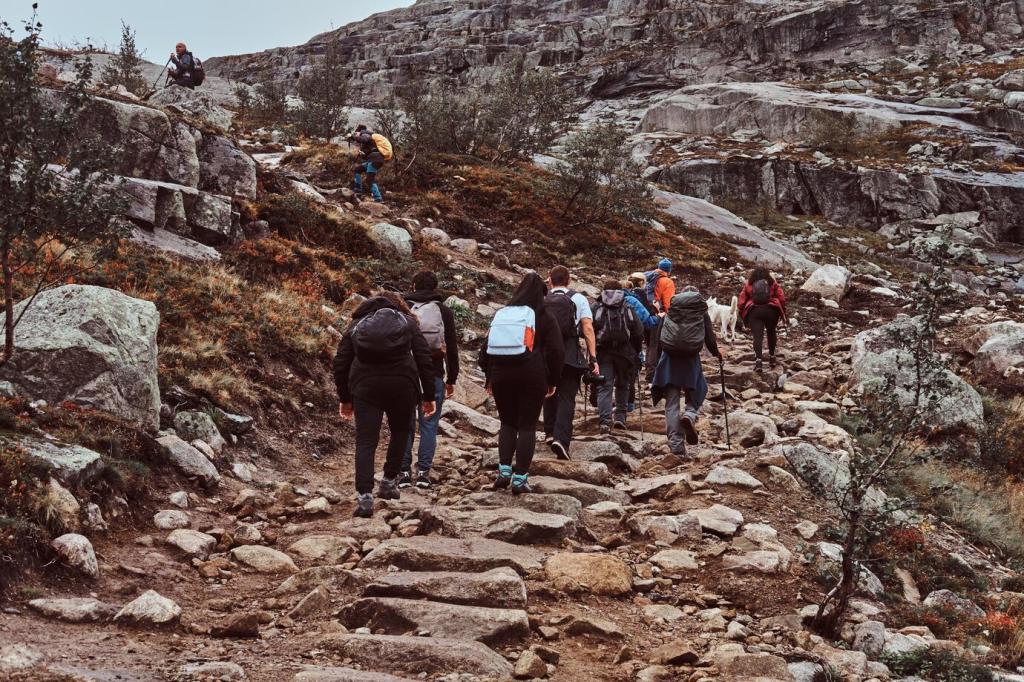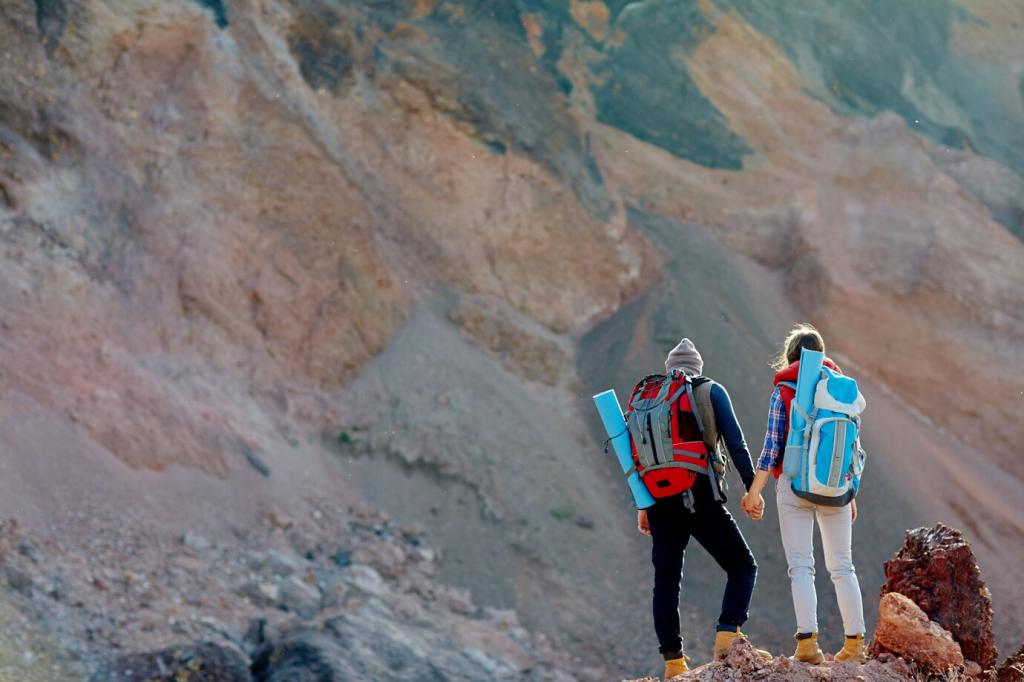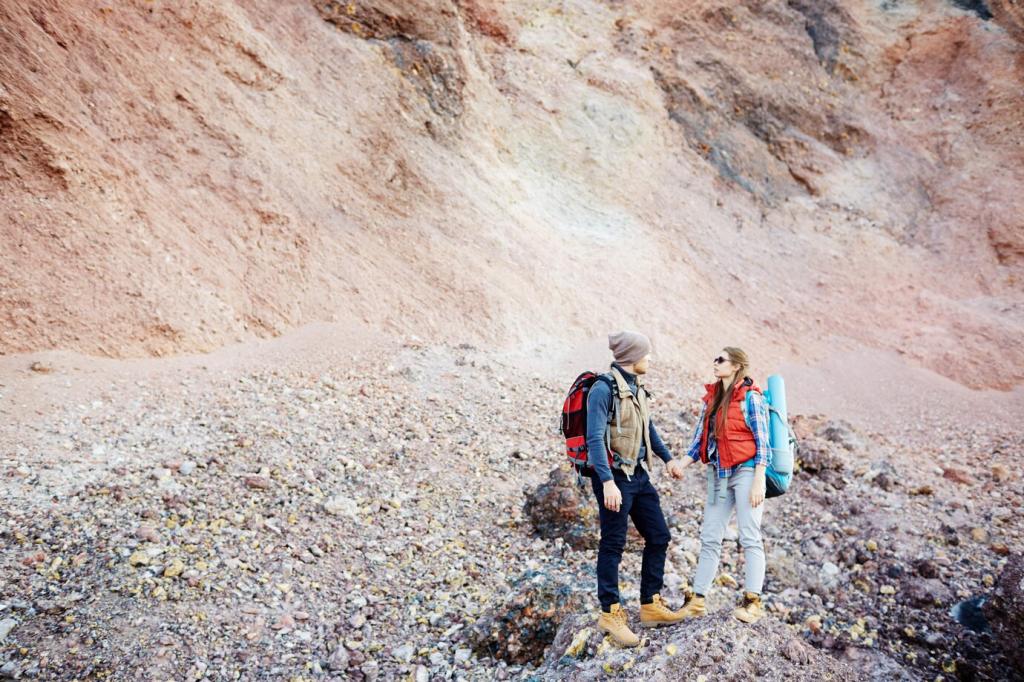
Stronger Steps: Overcoming Hiking Challenges
Today’s theme: Overcoming Hiking Challenges. Welcome, trail friends! This is your safe space to unpack tough ascents, sore feet, and surprise storms—and turn them into stories of grit and growth. Together, we’ll transform setbacks into skills, doubt into confidence, and hard miles into meaningful memories. Share your trail wins and lessons in the comments, and subscribe for weekly, heart-on-the-sleeve hiking guidance.

When panic flares on a steep scramble or weather shifts unexpectedly, pause. Breathe in for four, hold for four, out for six. Name three things you can see, two you can touch, one you can hear. This anchors your nervous system, slows spiraling thoughts, and restores practical focus so you can choose your next safe, confident step forward.

A brutal switchback isn’t punishment; it is information. Translate burning quads into actionable cues: shorten steps, lighten pack tension, sip water, check pace. Replace “I can’t” with “I’m learning how.” Each discomfort becomes a breadcrumb leading toward smarter movement, better preparation, and a durable mindset you’ll carry beyond the trail into everyday resilience.

On a windy ridge in late autumn, I turned around two miles from the summit. I felt disappointed—until we reached the car and the storm slammed the peak. That choice taught me that retreat is not failure; it is wisdom earned. Share your own turn-back stories below, and help normalize brave decisions that keep hikers safe.
Training That Prevents Trail Pain

Twice weekly, prioritize single-leg strength and balance: step-downs, Bulgarian split squats, weighted calf raises, and slow-eccentric lunges. Add ankle circles and hip airplanes for joint control. These moves protect knees on descents and improve traction during loose gravel sections. Strong stabilizers mean fewer slips, more confidence, and longer days without the dreaded end-of-trail wobble.
Gear Choices That Save the Day
Footwear, Socks, and the Blister Truce
Fit trumps brand. Test shoes late in the day when feet are slightly swollen. Pair with moisture-wicking socks and carry a small blister kit: tape, hydrocolloid, alcohol wipes, and a needle. At the first hot spot, stop and treat. Ten minutes now beats hours of hobbling later, and it often makes the difference between bailing and finishing strong.
Layering for Wild Weather Mood Swings
Adopt the versatile trio: wicking base, insulating mid, and breathable shell. Keep a warm hat and gloves year-round—you lose heat fast when you stop to navigate or snack. If rain threatens, prioritize a reliable hooded shell and pack liners. Dry layers protect judgment, dexterity, and morale when conditions flip from friendly to unforgiving.
Navigation Tools You Actually Use
Carry map and compass even if you trust GPS. Download offline maps and mark key junctions, bail-out trails, and water sources. Practice quick checks at every fork to prevent compounding errors. A lightweight headlamp with fresh batteries turns a late finish from terrifying into manageable. Redundancy is freedom when the trail tests your plans.

Weather Woes and Outsmarting the Elements
Start early to dodge afternoon storms in mountainous regions. If thunder cracks, move below ridge lines and away from isolated trees. Spread out your group and avoid metal contact. Keep a small, accessible dry bag for phone, map, and insulating layer. Storms pass; patience and precaution let you continue the day with dry gear and clear heads.
Trail Nutrition When Things Get Tough
When climbs stack up, aim for small, frequent bites: salty crackers, nut butter, dried fruit, and savory options to avoid sugar fatigue. Pack a “break glass” snack you love—gummies, stroopwafels, or jerky—for morale boosts. Eat before you’re hungry and you’ll keep your pace smoother, decisions sharper, and spirits sturdier over relentless terrain.
Navigation and Decisions Under Pressure
Reading the Land, Not Just the Map
Confirm features with your eyes: ridgelines, drainages, saddles, and spurs. Trace handrails like rivers or fences that guide you naturally. When the trail fades, stop immediately, mark your last known point, and backtrack methodically. The earlier you intervene, the smaller the problem. Leave a comment with your best terrain-reading trick for foggy mornings.
Using Tech Without Losing Sense
Phones fail; batteries drain. Treat GPS as a supplement, not a crutch. Keep devices warm in cold weather and toggle airplane mode to conserve power. Store waypoints before you leave service. A mini power bank weighs little and buys hours of confidence. Tech should amplify your awareness, never replace the map in your mind.
The Courage to Pivot or Turn Back
When time, weather, or injuries stack up, pivoting is strength. Set turnaround times before you start, and honor them even when the summit glimmers. Practice saying, “Not today—next time.” This ritual preserves trust in yourself and your partners. Share your hardest pivot below; your story might be exactly what a future hiker needs.
Join our mailing list
